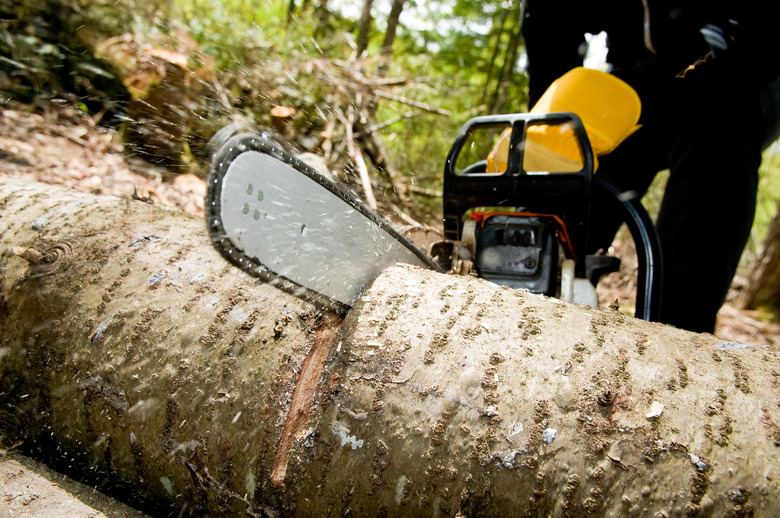Why A Stihl Chainsaw Won't Start
Many problems can cause your Stihl chain saw to stop starting. These problems range widely in complexity and costliness. However, these two-stroke engines were designed to minimize the number of parts that can lead to engine failure. Determining the source of your chain saw's problem will help you understand what it takes to get it fixed.
Ignition Spark Problems
Ignition Spark Problems
The crankshaft in the Stihl engine powers a flywheel. When this flywheel spins, two magnets generate magnetic energy. When enough magnetic energy has been generated, the ignition module gets tripped. This sends the spark up to the plug, where it ignites the fuel. Problems anywhere in the ignition system will stop your engine. Bad or corroded spark plugs, faulty wiring connections, broken wires, faulty ignition module or an improper air gap between the flywheel and the ignition module will all stop the engine from combusting. Start at the spark plug and work back to the ignition module and flywheel, checking all points on the ignition system.
Fuel Intake Problems
Fuel Intake Problems
If a spark is being generated, it needs enough fuel inside the cylinder at the right time. When the crankshaft spins, it creates a vacuum pressure on the carburetor, which sucks fuel up from the tank. The fuel is mixed with air in the carburetor before it's sent off to the cylinder. Anything that restricts the flow of fuel or air will cause your mix to be off, so it won't ignite in the cylinder. Dirty or clogged fuel tanks, dirty fuel filters and lines, loose fuel hoses, dirty air filters and a dirty carburetor can all restrict fuel flow. Check, clean and replace all the fuel system parts before moving into the internal engine, as gas problems create a majority of starting problems.
Carburetor Problems
Carburetor Problems
The carburetor draws fuel up from the tank, mixes it with air and then pushes it off into the cylinder. This system is regulated through three chambers: the metering section, where fuel is measured, the mixing section and the fuel pump. If this process can't work smoothly, the gas ceases to arrive in the cylinder with the right volume and at the right time. Dirty bores and jets, improperly seated needle valves, stuck levers and ripped or warped diaphragms will all stop the fueling process. Remove, disassemble and clean the entire carburetor. If parts are worn, install a carburetor upgrade kit before replacing a carburetor.
Compression Problems
Compression Problems
Compression is necessary for the entire spark and fuel systems to continue to work fluidly with one another. As the piston moves up and down in the cylinder, along with the crankcase, compression is generated. Compression can get compromised from an air leak somewhere inside the engine or from a clogged fuel or air system. When compression is not regulated properly, the piston can seize up in the cylinder, effectively ending the engine's life. Compression problems need a professional mechanic.
